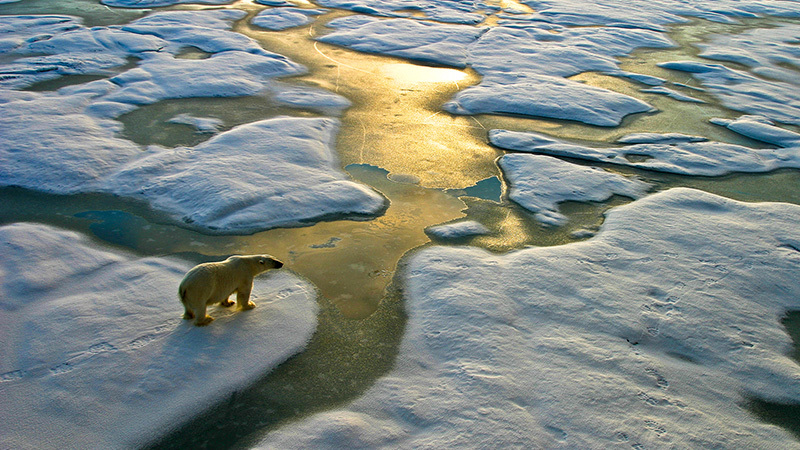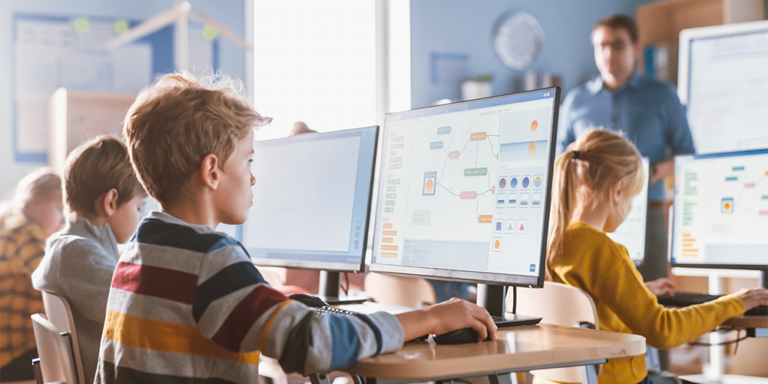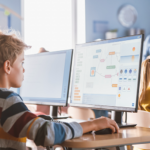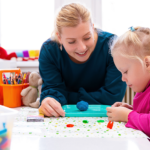The potential effects of climate change can sometimes feel overwhelming. After all, what can one person do in the face of such planet-wide shifts to the environment we now know? However, as teachers, we aren’t just one person; we’re helping to shape the next generation — the same generation who’s going to invent new technology, craft legislation, and make daily choices that will impact our planet (hopefully, for the better).
One of the best ways to engage students in learning about climate change is through exciting and interactive science experiments. We’ve compiled several fun climate change classroom activities you can use to help students understand the impact of climate change and how they can be part of the solution.
Greenhouse Effect Experiment
Age group: All
Supplies you’ll need:
- 2 bowls of equal size
- Plastic wrap
- Water
- A source of bright light (either from the sun or a lamp)
- Thermometer
- Pen and paper
Instructions:
- Fill the two bowls with the same amount of water.
- Measure and record the water temperature for each bowl.
- Seal one of the bowls with plastic wrap.
- Position the bowls under a bright light source or outside (if it’s sunny, of course).
- Have students predict how the temperature will change in each of the bowls.
- Leave out the bowls for one hour, and then measure and record the new temperatures.
While you facilitate the experiment, be sure to explain what each step means. As Let’s Talk Science described, “The plastic wrap serves as carbon dioxide in the atmosphere, which traps most of the heat energy that would otherwise escape. Then, the heat energy from the air (a gas) is being transferred to the water (a liquid), which warms up the water.” As a class, talk about how the temperature changed throughout the experiment.
The major takeaway from this experiment is the real-world effects of global warming happening now. Because oceans are heating from trapped carbon emissions, polar ice caps are melting and causing major problems for coastal life and land.
Making an Edible Ocean Ecosystem
Age group: Elementary school
Supplies you’ll need:
- A large, clear bowl
- 2–6 oz boxes of blue gelatin
- Red licorice twists (Twizzlers would work great)
- Scissors
- Gummy fish
- Mint leaves
- Hot water
- Cold water
- Liquid measuring cup
- Spoon or something to stir
Instructions:
- Start by making the blue gelatin by following the directions on the box. The gelatin will represent the ocean. Stir the hot water and gelatin mix until there’s no more powder (about 2 minutes). Then, keep stirring as you add 4 cups of colder water. After about 30 seconds, put the bowl in the refrigerator for 45 minutes.
- While the gelatin cools in the fridge, use scissors to cut the red licorice into smaller pieces (about 2 inches each). These sections of the licorice will simulate coral in the edible ecosystem.
- Take the mint and cut it into strands that are about 2 to 3 inches long. These will stand in for the seaweed in your ocean floor.
- After approximately 45 minutes, remove the cooled blue gelatin from the fridge. It should have thickened by now, but it will still not be completely firm. If it’s still runny or soupy, place the gelatin back in the refrigerator for 10 more minutes.
- Once the blue gelatin has thickened, insert the seaweed, coral, and gummy fish into it by delicately pushing in each item with your finger. Place some of the fish, coral, and seaweed near the outer edge of the bowl to increase their visibility. Once you’ve placed everything into your ocean ecosystem, jiggle the mixture lightly to patch the holes.
- Put your newly created ocean ecosystem back in the refrigerator for another 2 to 3 hours to allow the mixture to take a firmer shape.
Although this NASA-promoted activity is more of a craft than an experiment, it gives you several opportunities to discuss how certain species cannot survive a warming planet. As the class eats the dessert ocean, talk about how impossible it would be for some sea life, like the coral, to live in a hotter environment. This activity will introduce students to the importance of maintaining consistent temperatures for living organisms.
Electrical Consumption and CO2 Activity
Source: Center for Science Education
Age group: High school
This experiment is a great way to teach high school students how to reduce their carbon footprint. According to the Center of Science Education, this experiment will prompt your class to “analyze the energy consumption of a household appliance and estimate the amount of carbon dioxide it is adding to the atmosphere each year.”
Supplies you’ll need:
- Kill-a-Watt meter (You can get one of these for about $20, or you can add it to a classroom project on Donor’s Choose.)
- Power strip and outlet
- A collection of small appliances (options include toaster, hairdryer, a lamp with an incandescent bulb, cell phone and charger, microwave, boombox, blender, night-light, etc.)
- Pencils
Instructions:
- In the front of the classroom, display the appliances you plan to plug in, the power strip, and the Kill-a-Watt meter.
- Explain the function of the Kill-a-Watt meter, including how it allows users to assess how much electricity an electronic device consumes. It acts as the middle component between the power strip and the device. Further, it will measure and report the flow of electricity coming out of the outlet into the appliance, using watts as the metric of measurement.
- Choose two appliances at random and ask students which one they think uses more power.
- Pick a student volunteer to measure the competing appliances with the Kill-a-Watt. Ask the student to share the results, which will likely to surprise students.
- Keep one of the appliances in place and ask students to select a third device. Ask them again which one they think will use more power.
- Ask another student to measure and record the readings on the Kill-a-Watt meter. Have the student to share the comparison.
- Proceed with this interactive activity until your class has measured all the devices.
- Once everything is measured, ask the class how much people use each appliance on a daily basis.
- Have students calculate how many kilowatts each device uses per day and per year. Students can use the following process to make their calculations.
- Multiply watts by hours per day to get watt-hours as a variable.
- Divide the variable watt-hours by 1,000 to get the new value in kWh/day.
- Multiply this kWh/day value by 365 to get kWh/year.
This climate change classroom activity helps sharpen students’ analytical and critical thinking skills. It also helps them see how much energy commonly used devices consume. You can teach your students that power is generated through different channels, such as wind, solar, and nuclear energy, but it’s primarily derived from fossil fuels. Using fossil fuels for energy causes greenhouse gases to enter and pollute the atmosphere.






